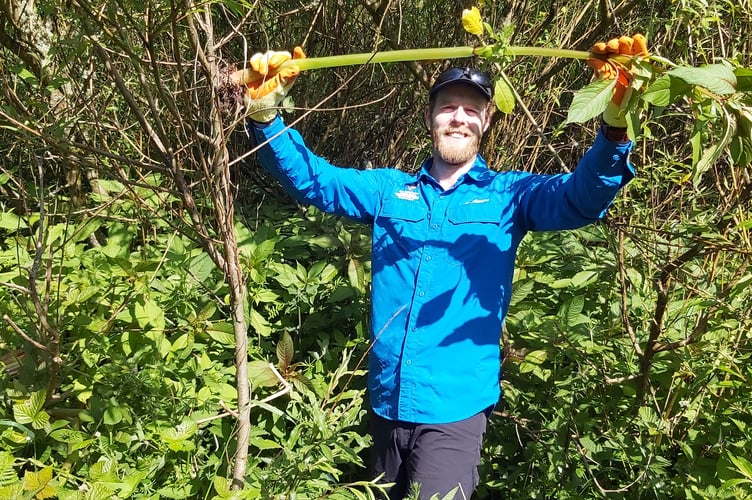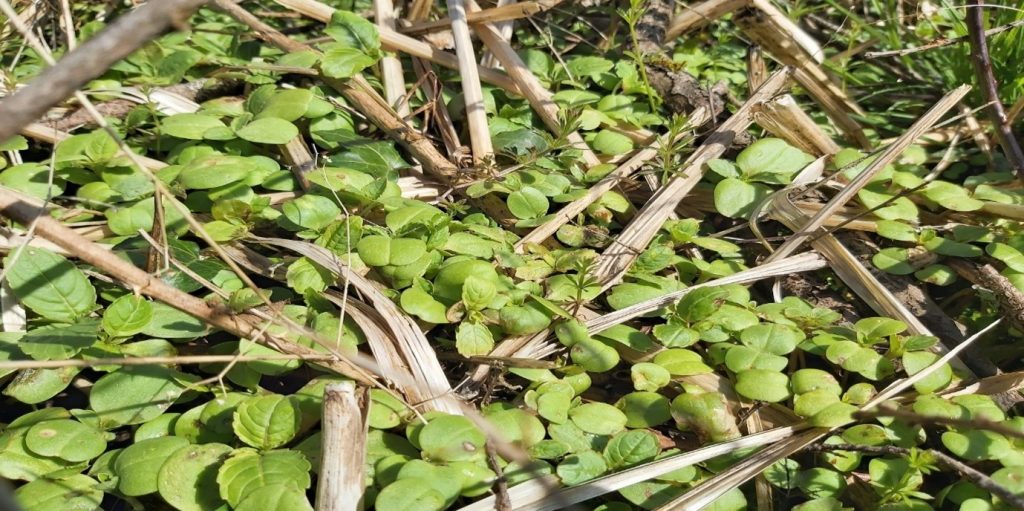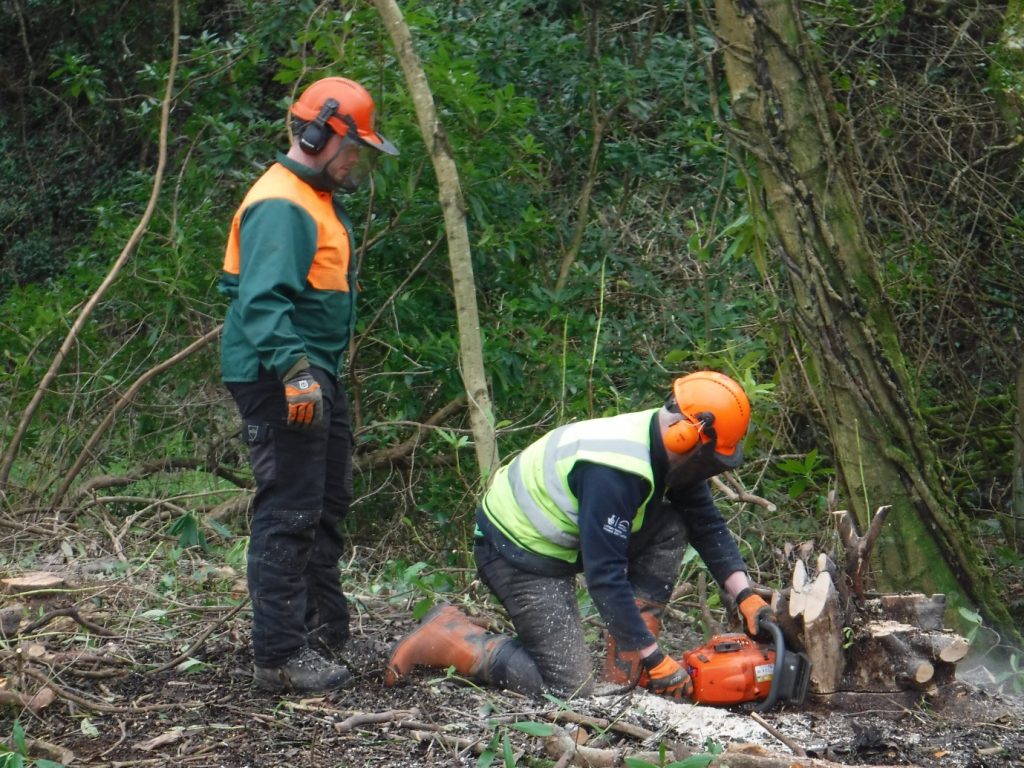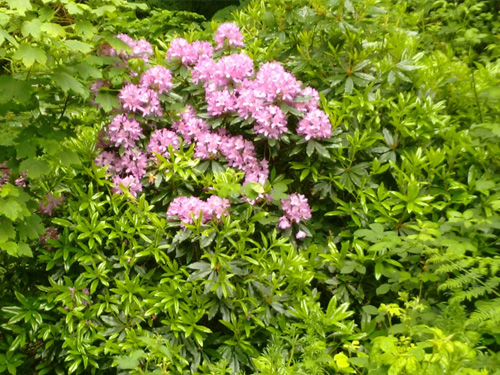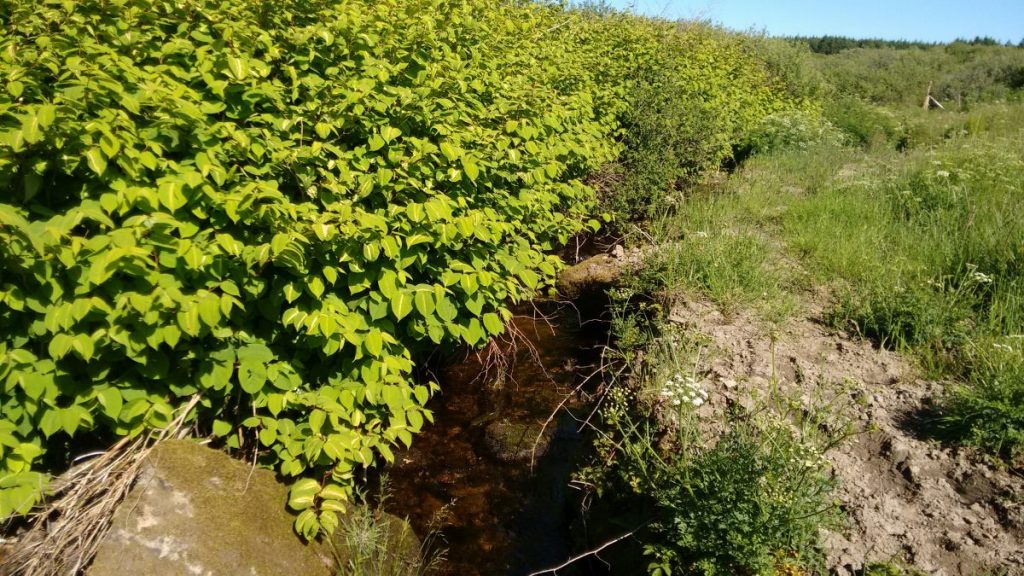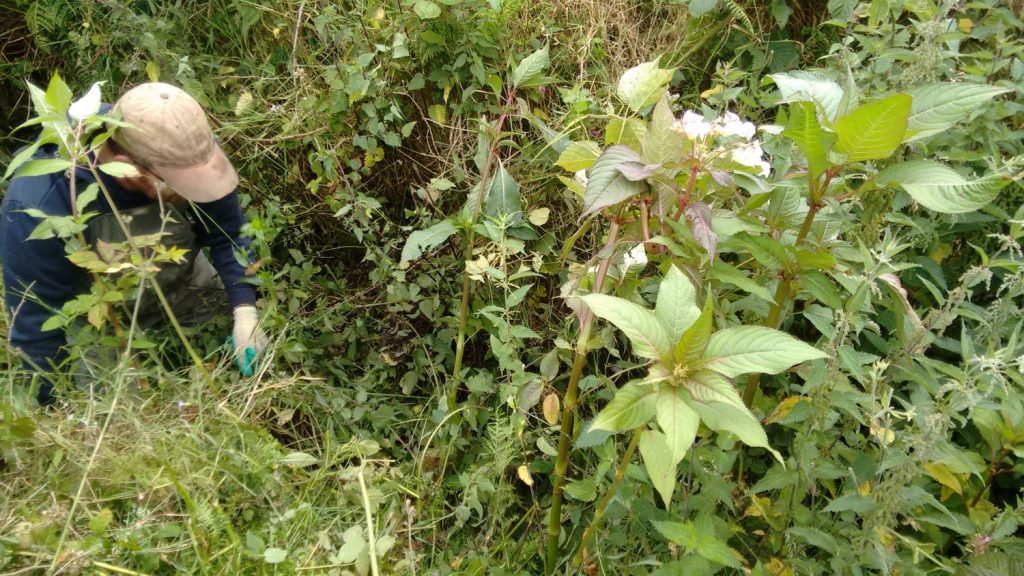Himalayan balsam (sometimes called ‘Indian balsam’, ‘jumping Jack’ or ‘policeman’s helmet’) (impatiens glandulifera) is an annual herb, introduced into the UK in 1839 from northern India.
Now found in most areas of the UK, Himalayan balsam has become an invasive non-native species (INNS) in the UK and is most commonly found on riverbanks, waste ground, and damp areas, and can also thrive in many other habitats.
Himalayan balsam tolerates low light levels and smothers other vegetation as it out-competes native plants, gradually impoverishing habitats.
What does it look like?
Seedlings begin to emerge in March, and during a single growing season, the plant can grow up to 3m tall. The dark green leaves have a dark-red midrib, serrated edges and can grow up to 15cm in length. The stems are pinkish-red and hollow with side branches that originate from joints in the main stem. Purplish-pink, or sometimes white, asymmetric helmet-shaped flowers start to appear in June and continue until October.
How does it spread?
The flowers are followed by seed pods, two to three cm long, which contain up to 16 seeds in each pod. A single plant has the ability to produce in the region of 800 seeds. If the main stem is cut above the first node, the plant will regrow in a candelabra effect, producing multiple flower heads resulting in the production of even more seeds.
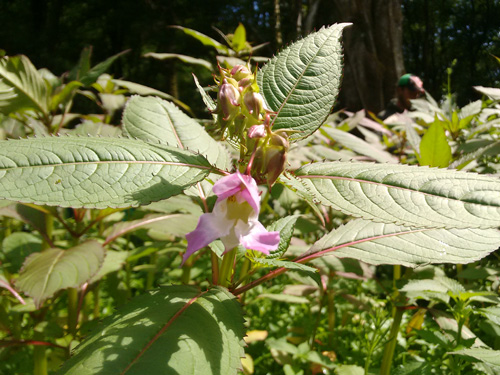
Dispersal
The distinctive mature seed pods ‘explode’ when disturbed in late July/August catapulting the white, brown and black seeds up to seven metres (22ft), a phenomenon known as ‘indehiscence’. Once established in the catchment of a river the seeds are transported further afield by water, enabling movement into new areas.
Humans have widely distributed the plant in the past by passing seed on to friends, or by inadvertently providing a movement method by seeds sticking to the underside of their shoes.
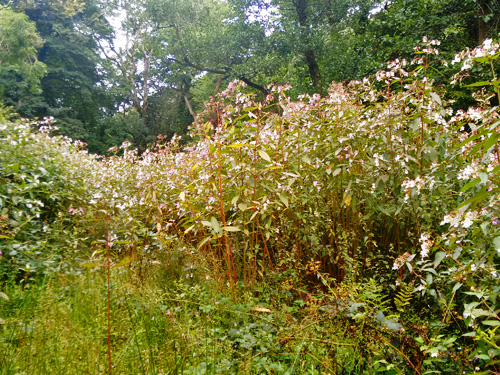
Control strategies
It is believed that Himalayan balsam seeds remain viable for up to two years. In areas with a high density of plants, strimming or cutting are effective control measures, but all stems must be completely severed below the lowest node (or joint). If not the plant will regrow in a candelabra effect producing even more seeds.
Pulling or uprooting is also very effective. Care must be taken to completely uproot each plant as plants with broken or damaged stems which are still rooted, can still grow and set seed. Cut or pulled plants can be safely left on site to decompose, but this must be done in a dry open area, or composted.
Control must be carried out before seed pods mature. For best practice see our Himalayan balsam leaflet via the link below.
